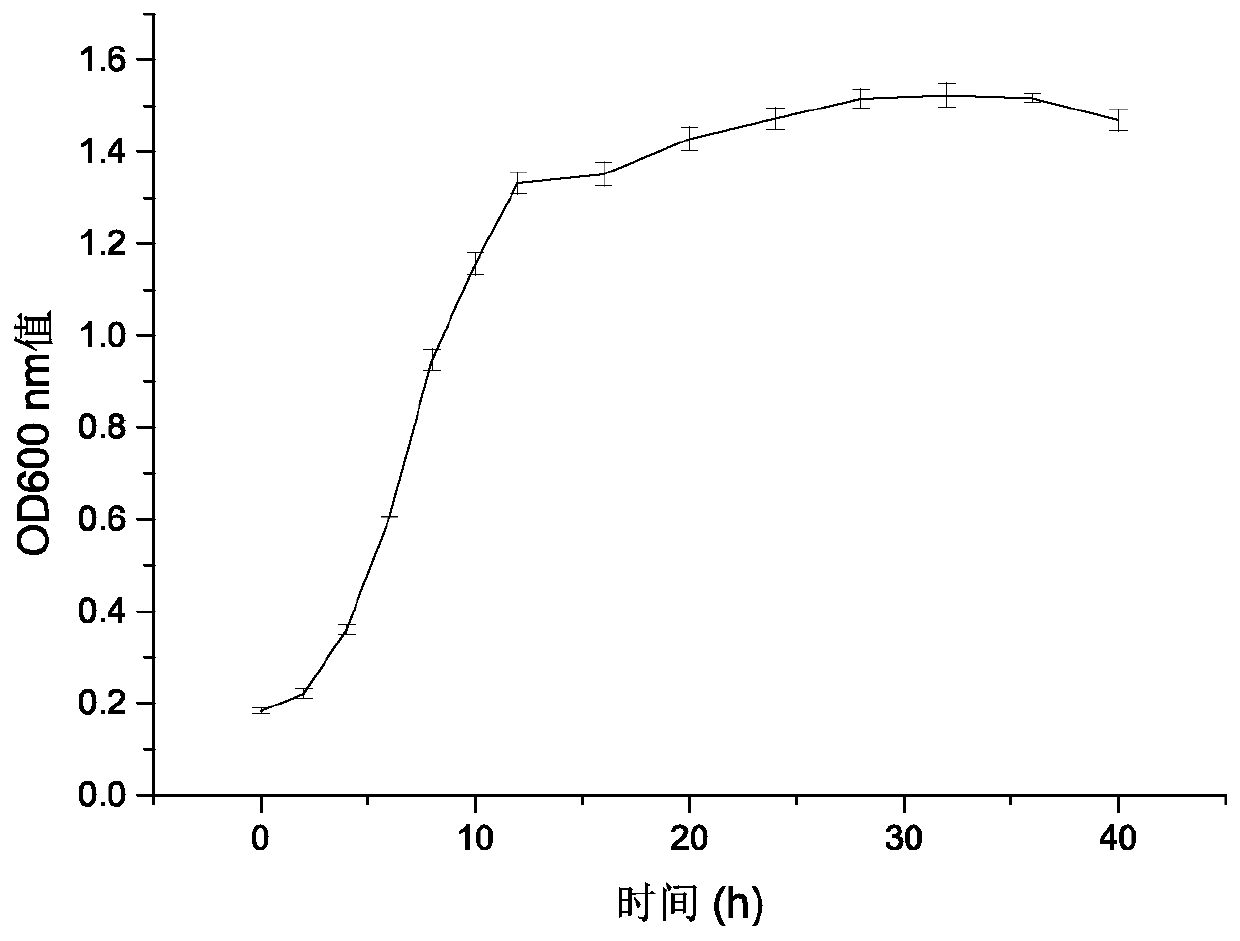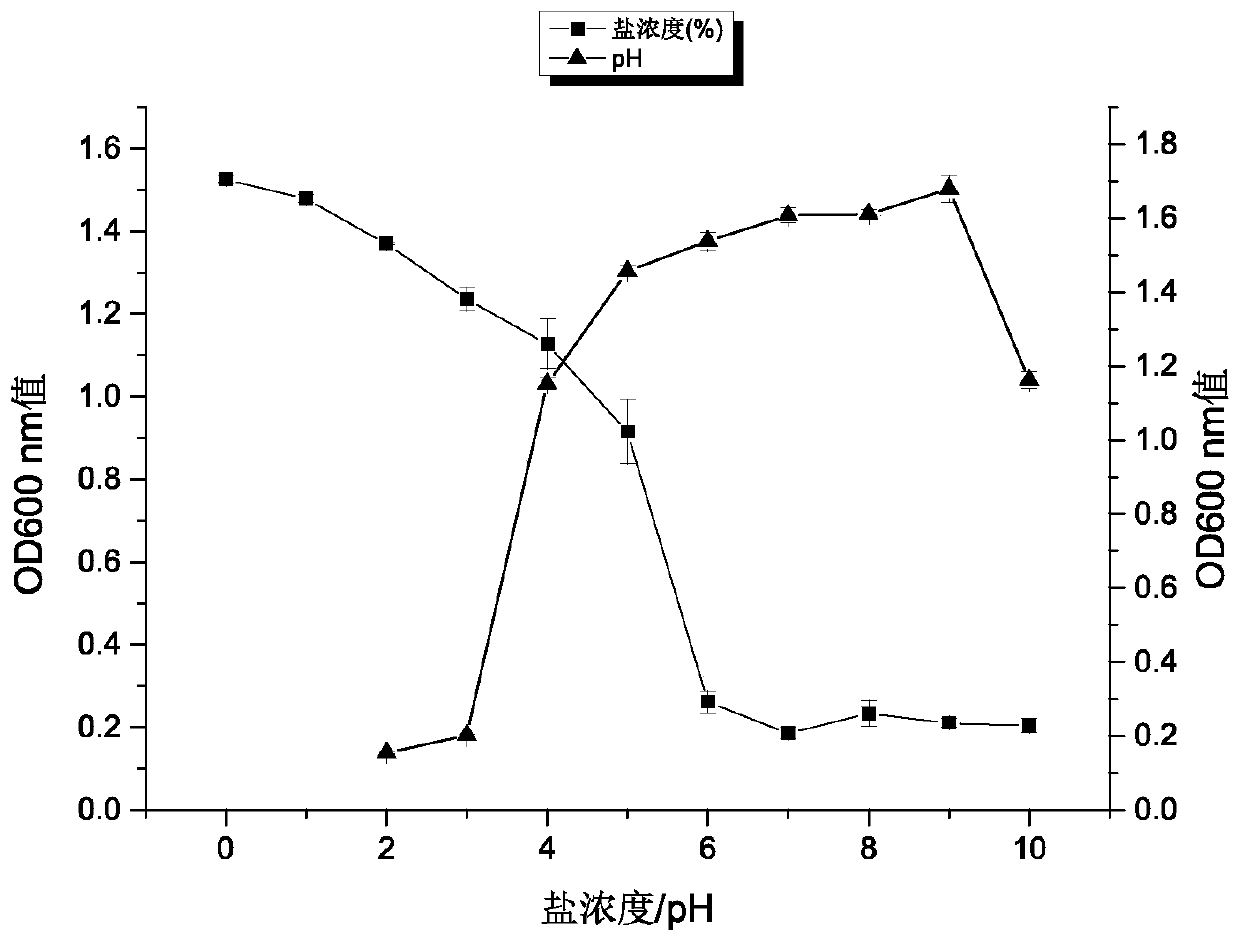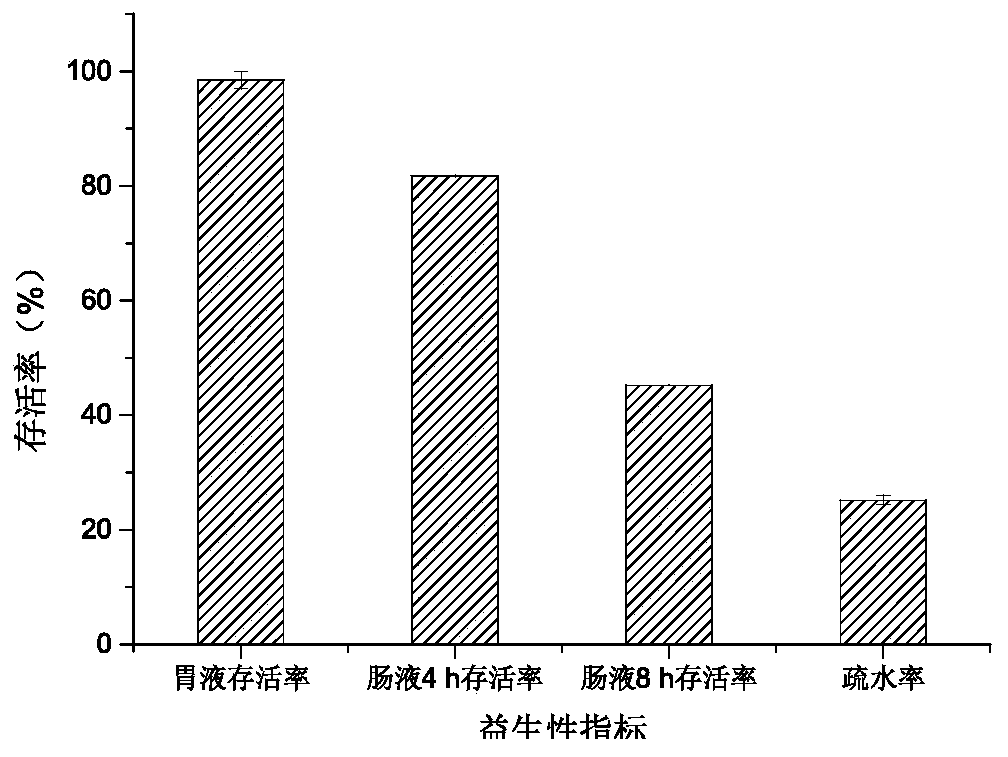Lactococcus lactis subsp.hordniae having high antioxidant activity and application thereof
A technology of Lactococcus lactis and antioxidant activity, which is applied in the field of microorganisms, can solve the problems of little research on lactic acid bacteria resources, and achieve the effects of improving utilization rate and conversion rate, improving antioxidant capacity, and improving palatability
- Summary
- Abstract
- Description
- Claims
- Application Information
AI Technical Summary
Problems solved by technology
Method used
Image
Examples
Embodiment 1
[0035] Example 1: Isolation and identification method of Lactococcus lactis subsp. halleri JYZ4
[0036] (1) Sample dilution culture
[0037] Weigh 25g of soy sauce residue sample in a conical flask under aseptic conditions, add 225mL of sterile saline, shake slightly to prepare 10 -1 Diluent. Prepare 10 sequentially -2 ~10 -5 Diluents of equal concentration. Pipette 0.1 mL of soy sauce residue dilutions with different gradients and spread them on the MRS medium. Seal with a parafilm, label with relevant information, and incubate at a constant temperature of 37°C for 24 to 48 hours until colonies grow.
[0038] (2) Separation, purification and preservation
[0039] Pick suspected lactic acid bacteria colonies in the MRS medium and purify them in three sections, and operate 2 to 3 times until the colonies on the medium have the same shape. The purified strains were inoculated in MRS liquid medium, cultured in a 37°C incubator for 24h, mixed with 50% glycerol 1:1, and sto...
Embodiment 2
[0059] Example 2: Research on the growth characteristics of Lactococcus lactis subspecies Halleri JYZ4
[0060] (1) Determination of growth curve
[0061] The strain of the present invention was activated for three generations, cultured in MRS liquid medium at 37°C for 40 hours, and the OD of the strain was measured every 2 hours 600nm value. by OD 600nm The value is the ordinate, and the culture time is the abscissa to draw the strain growth curve, the experimental results are shown in image 3 . 0h-4h of inoculation is the growth delay period of the strain, 4h-12h of inoculation is the logarithmic growth phase value of lactic acid bacteria, it enters the stable phase at 12h of inoculation, and enters the decline phase at about 32h of inoculation.
[0062] (2) Salt tolerance research
[0063] Prepare salt-containing MRS medium with 9 gradients of salt mass fractions of 0-9%, and sterilize it for use. Activate the strain of the present invention for three generations, cu...
Embodiment 3
[0066] Example 3: Study on the probiotic properties of Lactococcus lactis subsp. halleri JYZ4
[0067] (1) Simulated gastric juice tolerance test
[0068] Activate the bacterial strain of the present invention for three generations, absorb 3 mL of culture solution, centrifuge at 4000 r / min for 10 min at room temperature, remove the supernatant to obtain bacterial cells, suspend the bacterial cells in 3 mL of sterilized normal saline to prepare a bacterial suspension for later use.
[0069] Add artificial gastric juice and bacterial suspension (9:1) into a sterile centrifuge tube, and mix well. Cultivated at 37°C, at 0h (dilution of 10 -4 、10 -5 、10 -6 ) and 3h (dilution of 10 -3 、10 -4 、10 -5 ) sampled 0.1 mL, and calculated the survival rate of the strains using the plate count method. The experiment was set up in triplicate.
[0070]
[0071] (Note: A1 is the number of lactic acid bacteria survived in artificial gastric juice for 3 hours, A0 is the number of lacti...
PUM
| Property | Measurement | Unit |
|---|---|---|
| hydrophobicity | aaaaa | aaaaa |
Abstract
Description
Claims
Application Information
 Login to View More
Login to View More - R&D
- Intellectual Property
- Life Sciences
- Materials
- Tech Scout
- Unparalleled Data Quality
- Higher Quality Content
- 60% Fewer Hallucinations
Browse by: Latest US Patents, China's latest patents, Technical Efficacy Thesaurus, Application Domain, Technology Topic, Popular Technical Reports.
© 2025 PatSnap. All rights reserved.Legal|Privacy policy|Modern Slavery Act Transparency Statement|Sitemap|About US| Contact US: help@patsnap.com



